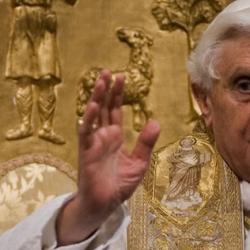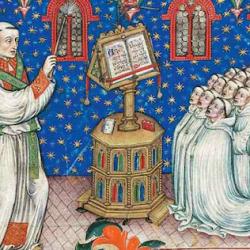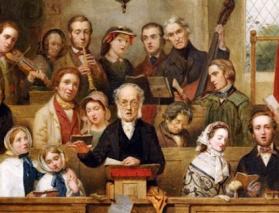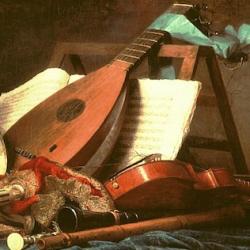Prior to the 18th century, writes Mark Evan Bonds, instrumental music was considered inferior to music that accompanied words (Wordless Rhetoric). According to the artistic theory developed by Johann Georg Sulzer, “instrumental music . . . can be pleasing and at times moving, but its ‘meaning’ is relatively obscure. Music without a text cannot specify the precise nature of the emotion it expresses or arouses within the listener. Vocal music, on the other hand, can make its emotional motivation explicit through the vehicle of the text. Music therefore ‘achieves its full effect only when it is united with poetry’” (162).
For Romantics, the ambiguity that was seen as a weakness of instrumental music was in fact a strength. It’s sublime transcendence of verbal, rational meaning was evidence of music’s unique power: “The absence of specific images, long considered a liability to instrumental music, was now held to be its greatest asset. Precisely because it transcended the representational limits of the word, a number of influential critics came to see instrumental music as the most demanding and mysterious, and thus the highest and most rewarding, medium of artistic expression” (163). As Novalis put it, “music for singing and music for dancing are not really true music, but only derivatives of it. Sonatas, symphonies, fugues, variations: this is real music” (quoted, 162).
Despite the change, Bonds argues that there was continuity through the Romantic revolution, and one key continuity was the “rhetorical” conception of music. It’s easy to see how vocal music can be seen as rhetorical: “Music accompanying a verbal text was seen as an amplification of that text.” It’s also easy to see that music that aims for Affekt would be considered rhetorical. But “music without any text at all was considered a wordless oration embodying a language in its own right” (164).
This was true for the pre-Romantics as much as for the Romantics. They shared the notion that composers worked from basic musical “ideas.” According to one late 18th-century theorist, “By the word ‘theme,’ we mean a brief musical passage consisting of a few notes, or a musical idea, as one calls it, presented in a few notes, much as one generally makes known the content or essence of a sermon with a word or two. This idea is subsequently the ongoing object, the continually recurring material and goal of either the musical work or the oration” (165). What is important in this definition is not the affective power of the theme but its potential for elaboration.
What’s new in Romantic theories of music is the detachment of musical ideas and rhetoric from the intention to affect the listening: “The musical oration, a public event directed to the listener, has now become a philosophical discourse, a private act that requires no audience, and indeed probably functions better without any audience at all. Coherence is still important, but now primarily as a validation of the work’s autonomous integrity, rather than as a prerequisite for moving an audience. Persuasion has relinquished its central role in the aesthetic equation: the composer is no longer a musical orator but a musical philosopher, and his ideas are to be interpreted on their own terms . The language of music, if referential at all, is now self-referential.” In his writings on music, Herder, for instance, “does not concern himself with the representational associations of a musical work’s prevailing idea, but rather with its treatment” (168).
This was in line with the “rising tendency of the Romantics to see all works of art, including music, as nonreferential” (167). Novalis again: “a very trivial idea can allow itself to be manipulated in a quite interesting fashion . . . Here it is the method, the procedure, the process that is of interest and agreeable to us . . . That which is new interests us less, for one sees that so much can be made out of the old. In short, the more one has a feeling for the infinity of the particular, the more one loses one’s desire for variety. One learns how to do with one single instrument something for which others need hundreds, and one is altogether more interested in elaboration than in inventio” (168).















